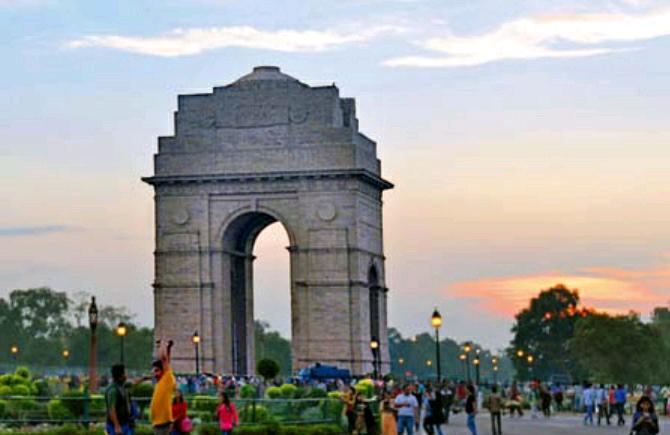India’s Relic Protection Legacy
2016-11-30byChuJiwang
by+Chu+Jiwang

Early this year, I attended the World Book Fair in New Delhi, India, where the citys efforts to protect relics and ancient ruins deeply impressed me.
Over the years, Ive developed a keen interest in relics, places of historical interest, and anything concerning Buddhism. India has ancient civilization and is the cradle of Buddhist culture. I had heard a lot about the country and its wealth of wellpreserved relics and places of historical interest and was excited for the opportunity to explore ancient temples and admire relics there.
My tour guide was eager to help, and our first stop was the Lotus Temple in New Delhi. As described in books about India, 80 percent of its residents are Hindus. However, I was perplexed as to how Buddhism was not the dominant religion in its own birthplace, the place where Sakya- muni became the Buddha.
The tour guide noted that although Buddhism was born in India, the countrys Buddhists account for less than 1 percent of the total population. Over the years, India has seen a rapid development in Hinduism, a religion with many gods. It was promoted heavily by the aristocratic class, who liked to build temples to spread the religion.
Nevertheless, Buddhist civilization has been well preserved and Buddhists have made great efforts protecting their temples despite the decline of Buddhism in the country.
The Lotus Temple is situated in a neat park spanning thousands of square meters. The most eye-catching structure is Lotus Pagoda. I was stunned by the pristine tract of land after a long journey along a dust road. The tour guide asked us to take off our shoes before entering the temple, wherein we climbed dozens of stairs.
Our next stop was the Rashtrapati Bhavan (“Presidential Residence”). Parking is not allowed nearby, so we just slowed down to get a look of the mansion from the car. The magnificent structure looked majestic as it was shaded by ancient pines and cypresses within the wall.
We then headed for Delhi Gate, a famous tourist attraction in New Delhi. After India became a British colony, the gate was erected to separate Delhi into old and new areas. Big and well preserved, it is now a landmark structure of New Delhi.
“Its really impressive,” I exclaimed to the tour guide. “Its tremendously significant because it maintains a legacy so that later generations will remember history.”
He agreed heartily: “History should be remembered and recorded in books. Forgetting history is like forgetting ancestors, and mistakes will get repeated. We wouldnt have relics or places of historical interest if our cultural legacies were destroyed a generation later.”